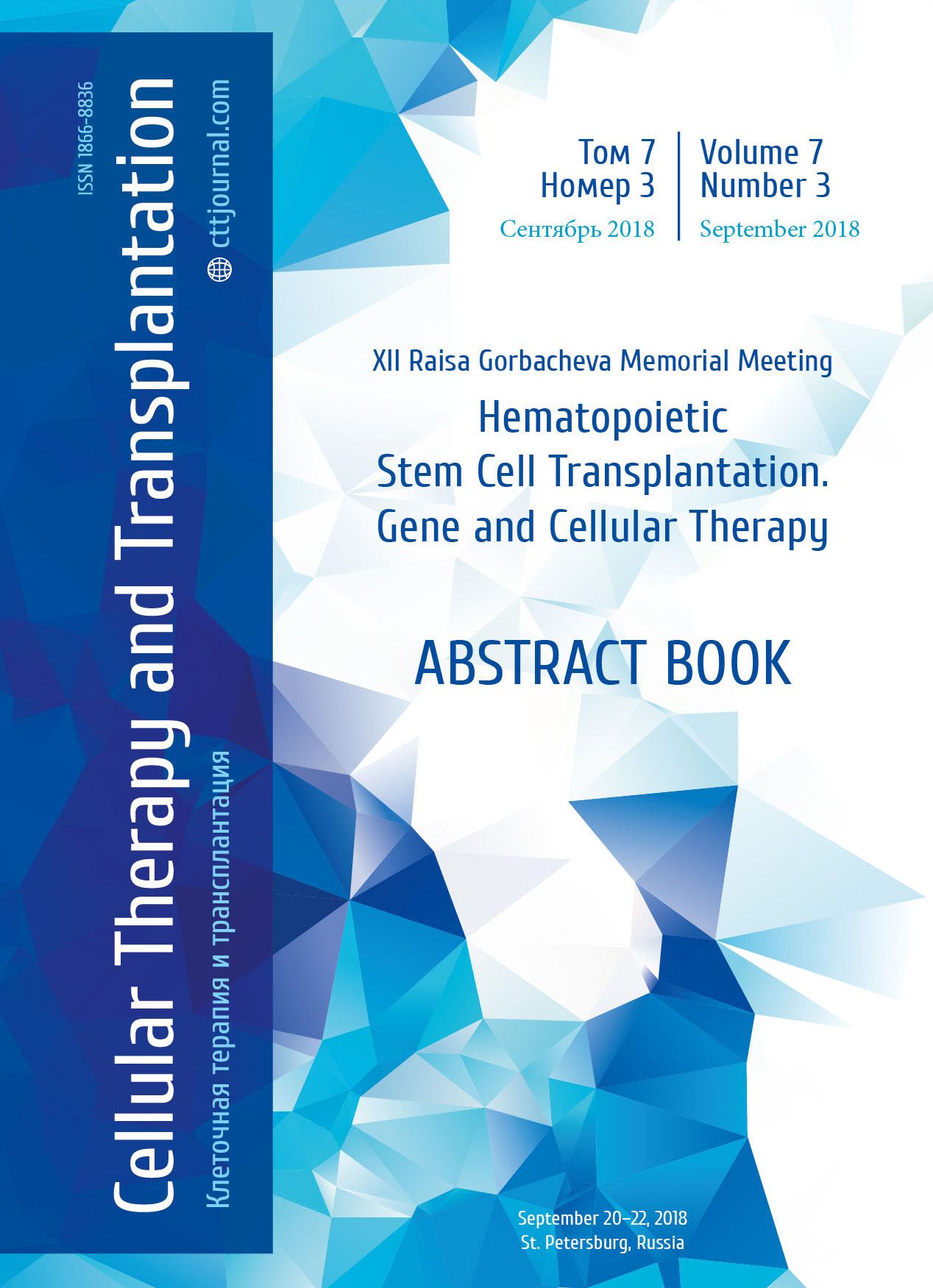Gemtuzumab ozogamicin and chemotherapy in patients with relapses and refractory acute myeloid leukemia
2 Leningrad Regional Clinical Hospital, St. Petersburg, Russian Federation
3 City Hospital No.15, St. Petersburg, Russian Federation
4 City Clinical Hospital №52, Moscow, Russian Federation
Summary
Introduction
In case of relapse and refractory course of acute myeloid leukemia (RAML), complete remission (CR) can be achieved in 25-50% pts. The five-year overall survival (OS) was 11%. The prognosis for patients with RAML remains disappointing. Prospects to improve the results of AML therapy are connected with implementation of target therapy. Gemtuzumab ozogamicin* (GO) is a conjugated monoclonal anti- CD33 antibody covalently bound to a cytotoxic agent-calicheamicin. Since CD33 is expressed on blast cells in almost all pts with AML, the use of GO in combination with chemotherapy (ChT) gives a chance to receive CR and perform allogeneic hematopoietic stem cell transplantation (allo-HSCT).
Aim
Aim of the study was to assess efficacy and toxicity of GO in combination with ChT in patients with RAML.
Patients and methods
The study included 25 pts with RAML. The median age was 36 (18-68) years. According to the molecular cytogenetic classification (MCC): low risk (LR), in 2 cases; intermediate (IR), in 14; high risk (HR), in 9 pts. Primary resistance (PR) was documented in 13 pts, whereas 12 showed secondary resistance (SR). Isolated bone marrow involvement was registered in 16 pts, combined affection was found in 8 pts (CNS, 2 cases; other extramedullary lesions, in 7 patients, and one patient had multiple lesions). The median CD33 expression level was 72% (9-95%). Four patients (16%) received GO after allo-HSCT. GO was administered at a dose of 3 mg/m2 (max. 5 mg) in combination with high-dose ChT (HDCT) (FLAG ± Ida, HDAC, HAM) or low-dose CT (LDCT) (MEtA, LDARA-C) in 12 and 13 pts, respectively. GO was administered once (1 GO) in 13 cases; twice (2GO), in 4 patients, and it was applied 3 times (3GO) in 8 pts. HSCT (unrelated,3; haplo,3; auto, in 1case) was performed after therapy with GO in 7 pts (28%), two of them had a second allo-HSCT from another donor. Median time of HSCT after GO was 62(17-138) days.
Results
Complete remission (CR) was achieved in 3 (12%), CR without peripheral blood recovery (NCR) in 6 (24%) pts, the overall positive response (OR) was obtained in 9 (36%) pts. The median CR duration was 56 (6-341) days. Depending on the MCC risk score, OR was achieved in 2 pts in LR, in 4 (29%) in IR, and in 3 (33%) pts in HR. OR was in 3 (23%) patients with PR, and in 6(50%) with SR. When combining LDCT and GO, the overall response (OR) was obtained in 3 (23%) patients, with HDCT + GO, it was achieved in 6 cases (50%). Depending on the number of the GO rounds, overall positive response (OR) was detected in 4 patients (31%) after 1GO; in none case, after 2GO; in 5 (62%) pts, after 3GO. The one-year overall survival (1OS) and disease-free survival (1DFS) were 26% (95% CI 6-46%), and 25% (95% CI 6-44%), respectively. Depending on allo-HSCT after GO therapy, the 1OS and 1DFS rates were 21% (95% CI 4-38) versus 8% (95% CI 1-15, p=.02), and 19% (95% CI 3-25) versus 6%(95% CI 1-11, p=.01), respectively. Among the responders to GO therapy, 3 pts died from AML progression, one patient was lost due to infection, and one died from hemorrhagic syndrome. Hepatic toxicity (ALT increase) of grade 1-2 was observed in 3 pts, and grade 3 was registered in 2 pts; sepsis was diagnosed in 9 pts. Sinusoidal obstruction syndrome was not observed in this group.
Conclusion
This study demonstrated significant efficacy and acceptable toxicity profile for combination of GO and ChT. GO with ChT can be considered for patients with RAML, as a bridge to allo-HSCT.
Disclosure
The authors report no conflicts of interest in this work.
* GO was provided under program of extended access for vital indications.
Keywords
Acute myeloid leukemia, target therapy, gemtuzumab ozogamicin.


